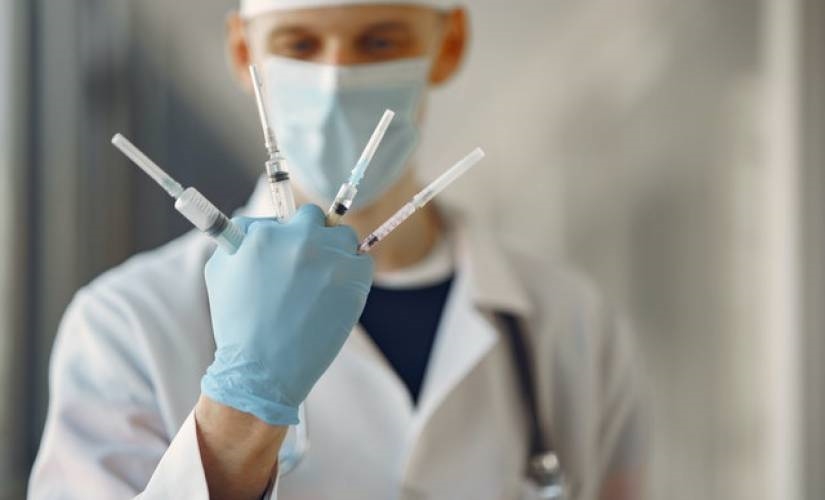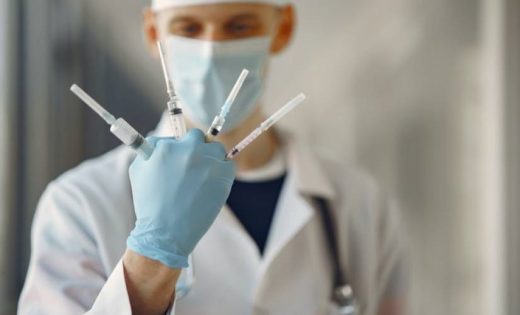How the Internet of Medical Things is Improving Healthcare for Patients and Professionals
How the Internet of Medical Things is Improving Healthcare for Patients and Professionals

The medical sphere is undergoing rapid transformation with the introduction of connected technological solutions. Known as the Internet of Medical Things (IoMT), this system of interoperable devices is improving data-informed actions. It’s also alleviating time-consuming tasks for professionals and offering greater autonomy and customization for patients. Here is how the internet of medical things is improving healthcare for patients and professionals.
Currently, there are more than 500,000 medical technologies available. Yet, the power of connected technologies has swiftly been realized amid the COVID-19 pandemic. Stationary medical devices implanted medical devices, and external wearables are driving forward the ability to collect, analyze, and transmit health data. In fact, predictions state that by 2026, the IoMT market will be worth $ 142.25 billion.
Companies like Johnson & Johnson, Siemens, and IBM have already invested in IoMT solutions. Other brands are also contributing to innovation at an unprecedented pace. Here’s how the Internet of Medical Things is improving healthcare for patients and professionals:
Advantages for healthcare professionals
Streamlined processes
Estimates state that IoMT will save the healthcare industry $ 300 billion annually in expenditures through remote patient monitoring and improved medication adherence. Even before COVID-19 struck, 88 percent of care providers invested in remote patient monitoring solutions that allow professionals to meet with patients and review their cases at a distance.
These devices have significantly reduced the burden on healthcare systems by lowering readmissions and giving professionals more time to dedicate to consultations and other pressing tasks.
Surgical Setting and Robotic Devices
In a surgical setting, connected robotic devices have improved precision levels for professionals. A smart drill links with a screen to recommend how and where to drill screws in bones depending on the density and resistance. Surgeons can carry out procedures faster and with greater certainty; the effects are long-lasting because the drill offers directions in real-time.
IoMT additionally simplifies logistics as it tracks medication inventory, ensures compliance in drug storage facilities, and validates access to medical storage. Some hospitals use connected video cameras and wireless ID wristbands or cards to manage the flow of admission to specific areas.
There is greater transparency in how the medication is transported because daily activities are intertwined with technology that automates and records such access. There’s equally a smaller window for error and fewer expensive losses.
Hospital equipment itself can benefit from IoMT capabilities too. X-ray machines and MRI and CT scanners can be integrated with solutions that monitor their performance and create diagnostic reports. On top of that, they can predict when maintenance is due and even upgrade equipment software remotely.
Big Data Analytics
According to researchers at IBM Watson, the average person is likely to generate more than one million gigabytes of health-related data in their lifetime. Electronic health records, omics data, and biomedical data all contribute to this figure. The collective volume of data from patients, therefore, helps medical professionals make more informed decisions about treatment and next steps.
Naturally, vast amounts of data need to be processed in a way that doesn’t create unnecessary tasks for professionals and is compliant with HIPAA rules. Artificial Intelligence (AI) and Deep Learning algorithms organize and present torrents of data. This empowers doctors to detect patterns or anomalies more easily. As a result, they can filter health trends and risks from large groups of patients. They can also make sound predictions about future developments.
For instance, the outbreak of COVID-19 was first reported by BlueDot, a platform that aggregates medical datasets. Using AI algorithms, the company discovered a cluster of unusual pneumonia cases around a market in Wuhan and informed the authorities.
On a smaller but equally significant scale, IoMT promotes big data analytics in clinical trials. Participants can be reminded of specific regimes and progress updates via mobile devices. These then send quantitative and qualitative information to a comprehensive database. Some trails have even gamified the data collection, so reward users submit details or confirm that they have followed protocols.
IoMT solutions standardize processes and ensure that the tests are fairer and the results are more representative. Moreover, data can be captured in real-time and shared between research groups, clinicians, pharmaceutical companies, and research organizations. Findings are then published much faster and treatments have a shorter time to market.
Advantages for Healthcare Patients
Greater autonomy for patients
Going for a check-up can be challenging and uncomfortable for many people who suffer from chronic pain or limited mobility. Rather than accept that they can only access treatment in-person, IoMT lowers the need for human intervention and empowers patients to take control of their health.
For example, biosensors can track patients’ movements in a non-intrusive manner. People with Multiple sclerosis (MS) can attach devices to their ankle, wrist, or hip and track activity like footsteps, sleeping patterns, tremors, and vital signs. Data from these devices can then be transferred to computers to determine the best course of treatment on a case-by-case basis.
Elsewhere, smart prosthetics have integrated with platforms to not only share data but also to exchange control information. For instance, a leg prosthetic could use microprocessors alongside situational awareness sensors to create wholly natural and reactive movement.
The limb can record how the wearer moves, how fast they move, and detect what kind of environment they are in. It then adjusts the leg in real-time according to these criteria. Changes are stored via a connected app, where the user can automate or tailor settings. As a result, users don’t have to visit medical professionals to alter their prosthetics.
First introduced in 2018, smart pills have microscopic sensors that, when ingested send data to devices like tablets or smartphones. The sensors enter patients’ guts and measure core temperature, pH levels, and check that recommended medication dosage is followed. Meanwhile, smart monitors and sensors on bedding, clothing, or skin can keep track of patients’ movements, even involuntary ones.
For example, Apple has developed a Movement Disorder API for people with Parkinson’s disease that monitors tremors and dyskinesia. The API can be integrated with a range of software and can highlight if a patient has negative side effects to treatment.
Optimized user experience
For IoMT to have the biggest possible impact, it has to be accessible for all people. Furthermore, if IoMT is to see sustained growth, users require positive interactions with the tech. As the remote revolution occurs due to the COVID-19 pandemic, connected healthcare devices can be inclusive for every user segment.
Notably, IoMT solutions can help develop positive habits in older generations who aren’t familiar with new technology. For example, smart pillboxes are synced with patients’ phones to remind them when and how much of their medication to take.
The benefit of IoMT is that there is greater agility to optimize the user experience based on user feedback and behavior. For instance, companies can learn about user difficulties and experiment with changes that better cater to patients by collecting data from in-device surveys, chatbots, and heatmaps.
What’s more, IoMT also offers a level of personalization that isn’t always possible during face-to-face doctor visits. Text size can be increased for visually-impaired persons, and flows can be shortened for people with short attention spans. There’s also the possibility to enable voice-recognition and virtual reality (VR) features.
Well-designed user experience (UX) aligns with people’s desire to stay informed about their health from their homes. As users seek digestible information quickly, IoMT can provide regular updates, advice and provide a direct line to medical professionals if needed.
While there are clear advantages of IoMT, there are still some obstacles to be overcome to see wider adoption. High infrastructure costs, potential cybersecurity vulnerabilities, and a lack of interoperability are yet to be resolved. Nonetheless, audiences will become accustomed to technology as health organizations commit to IoMT models. This will spur cheaper, safer, and regulated IoMT options.
Already, IoMT has proven that it is a necessary and valuable step forward for healthcare. As it continues to scale and improve lives, both patients and professionals will feel the effects – quite literally.
Image Credit: gustavo fring; pexels
The post How the Internet of Medical Things is Improving Healthcare for Patients and Professionals appeared first on ReadWrite.
(43)


